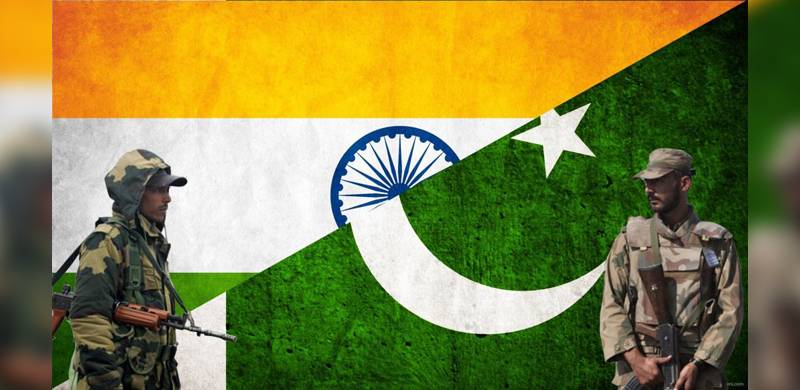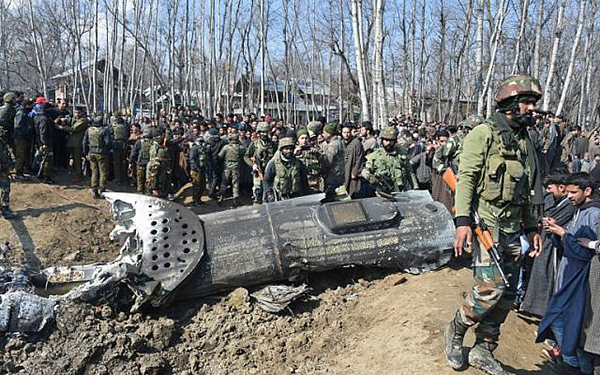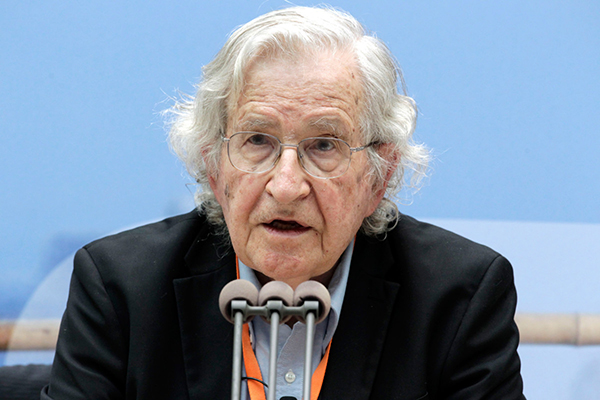
The expressions of xenophobic nationalism in the wake of recent episodes at LOC between India and Pakistan have exposed the loopholes in comprehension of nationality and nationalism. Nationality, as Mikhail Bakunin noted, is a “natural and social fact,” as “every people and the smallest folk-unit has its own character, its own specific mode of existence, its own way of speaking, feeling, thinking, and acting; and it is this idiosyncrasy that constitutes the essence of nationality.”
Nationalism is the social space for sprouting the seeds of identity narrative and grammar of racial subjugation, political subjectivity and religious subduing. Nationalism is interiorized, imputed and ascribed in many ways. Hindu nationalists in India, religious seclusion of religious minorities in Pakistan, white supremacists in US are few of countless examples. Politicians, religious scholars and hate mongering actors in society mobilise mass of people around hate centered substructure of nationalism.

Hitler invigorated racism in the name of nationalism. Mussolini did likewise. The British championed supremacy of white race. Nationalism provided theoretical justification to authoritarianism and thus by camouflaging class differences within the nations, consolidated imperialism and expansionism.
Religion being the mode of social organisation, way of formulation of social relations, resorts to nationalism just like nationality and ethnicity, social segmentation and exclusion of religion, nationality and ethnicity negating collective pluralism and cultural diversity by appropriating inflammatory narratives against marginalised groups of the society.
https://www.youtube.com/watch?v=qUPAwgzjYp0&t=39s
The ideology of Nationalism is unwaveringly underpinned by apprehensions and contradictions. It can be ambitious to lead accomplishing something or to celebrate fait accompli. It can be inclusive and exclusive in nature. The emotional fuel of nationalism consists of both positive and negative feelings of infused pleasure and hate. Nationalist separatism and state sponsored antagonism isn't raised only upon hatred for unalike but upon pleasure of serving one's own lineage. Nationalism can subsume inclusive manifestations but in the political radius of nationalism, actuating heads around the positive nationalist frame can never be nonpartisan.
Institutionalising the division of masses and designating people in the world of religion, nationality and ethnicity can never be explicitly recognised but it normatively bolsters the idea of non-inclusion of contradistinctive individuals or groups.

Undoubtedly, nationalism plays the role of a progressive force as well. This is evident when it evokes people to a common struggle for emancipation from imperialist subordination. However, in capitalist nations, nationalism often is reflected as retrogressive force. Nationalism is the key means of obnubilation of the the class differences and avouching the hierarchy of status quo. When the need arises to protect their interests, national interests are declared threatened. Nationalism is employed to submerge the relapses for the system. For instance, in Pakistan: the slogan of "Modi Ka Jo Yarr Hai, Ghaddar Hai, Ghaddar Hai (Anyone who is a friend of Modi, is a traitor)" during 2018 elections implies the exploitation in the name of nationalism. In India, there is election season now. BJP led government is currently using same tactic of nationalism to regain the confidence of voters.
https://www.youtube.com/watch?v=AoCh2VdUYV8
Noam Chomsky profoundly noted: "Jingoism, racism, religious fundamentalism: these are the ways of appealing to people if you are trying to organise a mass base of support for policies that are really intended to crush them.”
According to a Human Development Report, nearly 60 percent of Indians live on less than a dollar per day. This is worse than sub-Saharan countries. But at the same time 8 percent of the population is controlling 90 percent of wealth which leaves 22 percent of population in low to upper middle class.

In Pakistan, nearly 45 percent population lives in multidimensional poverty. On average, nearly 11.2% of GDP in the world is spent on education, health and social protection. But underdeveloped countries of Asia Pacific set 3.7% of their GDP for the cause. Owing to these statistics, it is quite comprehensible why Pakistan and India are miles away from being welfare states. Both states should direct their focus on alleviating poverty rather than spending on arms and meliorating the lives of their citizens.
Nationalism is the social space for sprouting the seeds of identity narrative and grammar of racial subjugation, political subjectivity and religious subduing. Nationalism is interiorized, imputed and ascribed in many ways. Hindu nationalists in India, religious seclusion of religious minorities in Pakistan, white supremacists in US are few of countless examples. Politicians, religious scholars and hate mongering actors in society mobilise mass of people around hate centered substructure of nationalism.

Hitler invigorated racism in the name of nationalism. Mussolini did likewise. The British championed supremacy of white race. Nationalism provided theoretical justification to authoritarianism and thus by camouflaging class differences within the nations, consolidated imperialism and expansionism.
Religion being the mode of social organisation, way of formulation of social relations, resorts to nationalism just like nationality and ethnicity, social segmentation and exclusion of religion, nationality and ethnicity negating collective pluralism and cultural diversity by appropriating inflammatory narratives against marginalised groups of the society.
https://www.youtube.com/watch?v=qUPAwgzjYp0&t=39s
The ideology of Nationalism is unwaveringly underpinned by apprehensions and contradictions. It can be ambitious to lead accomplishing something or to celebrate fait accompli. It can be inclusive and exclusive in nature. The emotional fuel of nationalism consists of both positive and negative feelings of infused pleasure and hate. Nationalist separatism and state sponsored antagonism isn't raised only upon hatred for unalike but upon pleasure of serving one's own lineage. Nationalism can subsume inclusive manifestations but in the political radius of nationalism, actuating heads around the positive nationalist frame can never be nonpartisan.
Nationalism is employed to submerge the relapses for the system. For instance, in Pakistan: the slogan of "Modi Ka Jo Yarr Hai, Ghaddar Hai, Ghaddar Hai (Anyone who is a friend of Modi, is a traitor)" during 2018 elections implies the exploitation in the name of nationalism.
Institutionalising the division of masses and designating people in the world of religion, nationality and ethnicity can never be explicitly recognised but it normatively bolsters the idea of non-inclusion of contradistinctive individuals or groups.

Undoubtedly, nationalism plays the role of a progressive force as well. This is evident when it evokes people to a common struggle for emancipation from imperialist subordination. However, in capitalist nations, nationalism often is reflected as retrogressive force. Nationalism is the key means of obnubilation of the the class differences and avouching the hierarchy of status quo. When the need arises to protect their interests, national interests are declared threatened. Nationalism is employed to submerge the relapses for the system. For instance, in Pakistan: the slogan of "Modi Ka Jo Yarr Hai, Ghaddar Hai, Ghaddar Hai (Anyone who is a friend of Modi, is a traitor)" during 2018 elections implies the exploitation in the name of nationalism. In India, there is election season now. BJP led government is currently using same tactic of nationalism to regain the confidence of voters.
https://www.youtube.com/watch?v=AoCh2VdUYV8
Noam Chomsky profoundly noted: "Jingoism, racism, religious fundamentalism: these are the ways of appealing to people if you are trying to organise a mass base of support for policies that are really intended to crush them.”
According to a Human Development Report, nearly 60 percent of Indians live on less than a dollar per day. This is worse than sub-Saharan countries. But at the same time 8 percent of the population is controlling 90 percent of wealth which leaves 22 percent of population in low to upper middle class.

In Pakistan, nearly 45 percent population lives in multidimensional poverty. On average, nearly 11.2% of GDP in the world is spent on education, health and social protection. But underdeveloped countries of Asia Pacific set 3.7% of their GDP for the cause. Owing to these statistics, it is quite comprehensible why Pakistan and India are miles away from being welfare states. Both states should direct their focus on alleviating poverty rather than spending on arms and meliorating the lives of their citizens.
